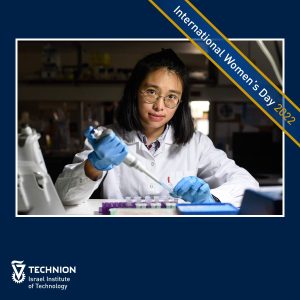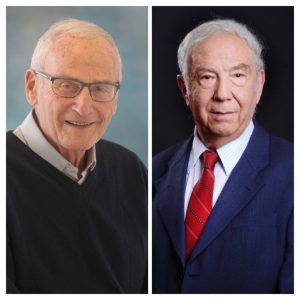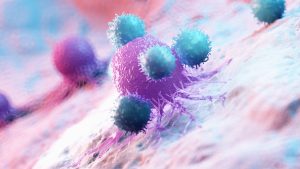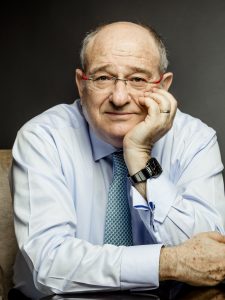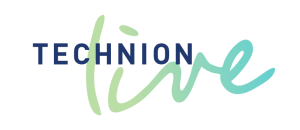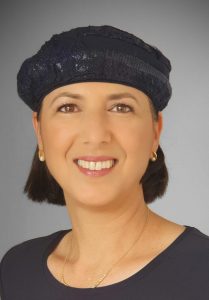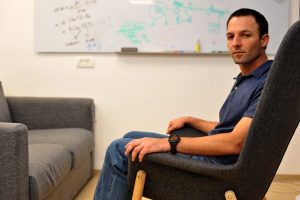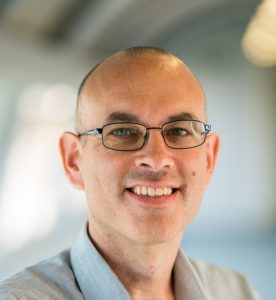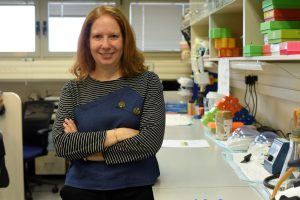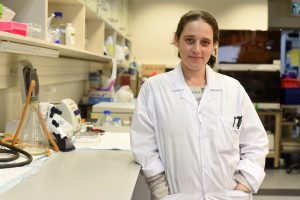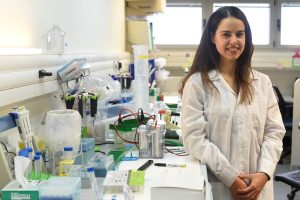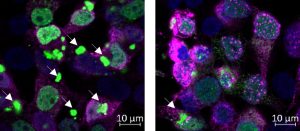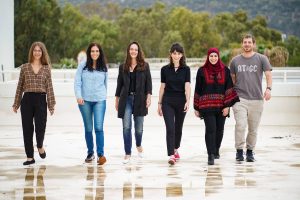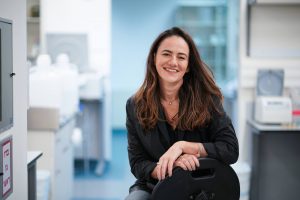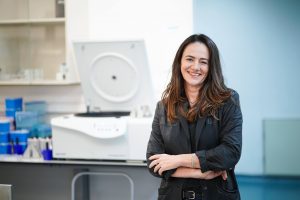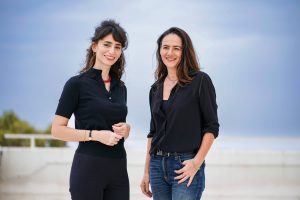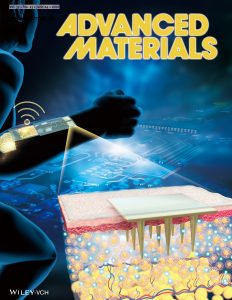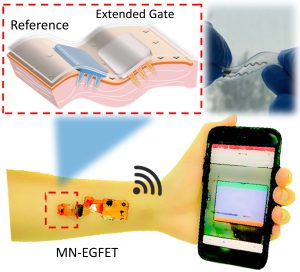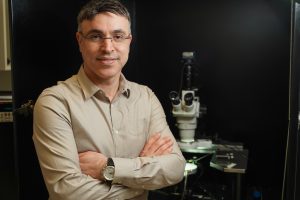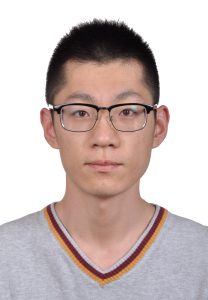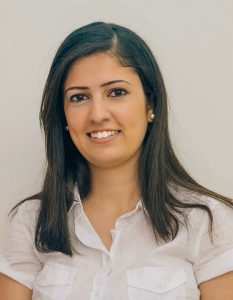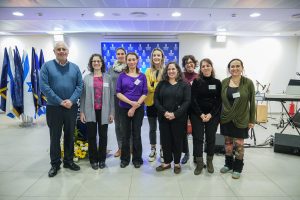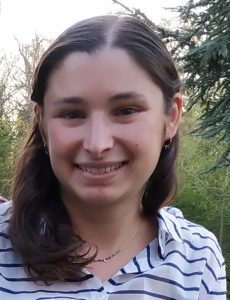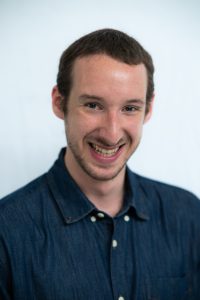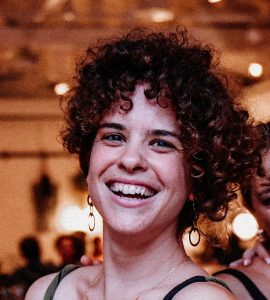Rongying Huang came to the Technion in the summer of 2016 as an international student from China. Today, she is a Ph.D. student in the biotechnology lab, and lives in Haifa with her husband Yang and their two kids – Yuanyi (Yoni) and Miya. She sat down with us to talk about her journey and why she decided to stay.
Why did you decide to come and study at the Technion?
The reason I came to Israel was to take a one-month summer “ulpan” (Hebrew school) as part of my bachelor’s degree. I came in the summer of 2016 to study Hebrew, visited different universities and traveled around, and then decided to come back and study. I was introduced to the universities, research, and innovation companies through the ulpan. For me, the most interesting part was the cutting-edge research.
For me, the most interesting part was the cutting-edge research
How did you find the cultural differences between China and Israel?
As you know, China is a very large country, with huge differences between the north and south, east and the west. I lived in Beijing, which is a junction that connects all the points, and my home was very close to the embassy district and the Lama Temple. It’s common to see some religious people in my neighborhood, which gave me a familiar feeling in the religious neighborhoods in Haifa. I also feel different from other Chinese students and identify more with city people – I don’t see such a big difference between Haifa and Beijing. People here like to socialize in the streets – in cafes, listening to live music – the same as in Beijing. Though I think that Chinese people eat more street food.
I don’t see such a big difference between Haifa and Beijing
Tell me about some your challenges here
The biggest challenge I faced at the beginning of my life in Israel was the gap between my academic knowledge and my life skills. If I did it all over again, I would rely more on others for help. Regarding academic studies, I didn’t think deeply enough about the topics or try to solve problems creatively. I had no idea about life here, and practical skills.
I needed to learn how to solve the problem, not only know how to pass the exam
For my bachelor’s degree in Beijing, I only needed to do my homework and submit it. We weren’t encouraged to ask open questions or carry out research. For my master’s degree at the Technion, my professor always encouraged me to learn how to solve the problem and not only know how to pass the exam. At the time, this was a huge challenge for me and very tough. Luckily, I got a lot of help from my professor, lab colleagues, and other students. It’s no longer a challenge.
I am an only child, as is common in China. I grew up in a loving household with my parents and grandparents. I didn’t need to do housework or learn to cook or take care of other siblings. I never needed to share. When I came to study in Israel, it was my first time living alone. I learned to cook from the internet, and in the beginning, it was hard! But this is something that comes with practice and is easily learned. It’s no longer a challenge for me. Sometimes I make shakshuka for my kids.
Can you tell me about your Ph.D. research?
Today, I’m a PhD student in the Interdisciplinary Program for Biotechnology. My research, supervised by Professor Daniel Ramez from the Faculty of Biomedical Engineering, is on genetically modifying bacteria to fight cancer. We engineer the bacteria gene into a smart agent and design it to deliver the immunotherapeutic drug to the solid tumor area in a local and controlled way.
Why did you decide to stay in Israel?
After my husband’s master’s degree, he continued with his Ph.D. so we could afford to stay here. Then I also found a Ph.D. position at the Technion, so it made sense to stay in Israel.
What’s it like, bringing up children in Israel?
Israel gave me a chance to bring up kids while studying at the same time.
In Israel, there are many differences in bringing up children compared to China. In Beijing, kids go to the hospital whenever they have fever, a cough, a runny nose, or even loss of appetite. We don’t need to make an appointment or go to the local clinic.
In Israel, there are many daycare options, where kids can go starting when they are 3 months old. This has given me the support to go back to work. In Beijing, kindergartens mostly start from 3 years old. They are bigger institutions, and more like schools. Before the age of 3, most kids stay at home, and are looked after by their grandparents, or one of their parents. This means that I wouldn’t have been able to work had I been in Beijing. Many parents (mostly, moms) need to sacrifice their career to stay with their kids. Israel gave me a chance to bring up kids while studying at the same time.
What is special about the Technion, and would you recommend it to others back in China?
After so many years studying in Israel, I don’t have much contact with master’s and Ph.D. students in China. But I have to say, I’ve met and talked to some famous professors who are more like idols or legends in China. Collaboration between China and Israel can really advance progress in science and technology: the Technion has some of the most intelligent people in the world and so many innovative ideas. In China, there is the potential to make these ideas come true. For the Technion, this means expanding the range of research, accelerating startups, and attracting more Chinese students to Israel.
Right now, the combination of my research work and looking after two kids takes up a lot of my time. Before I had kids, I used WeChat and Weibo (the Chinese equivalent of Facebook) to introduce Israel and the Technion to Chinese students. People always ask if it is safe here. I would love to help to introduce more people to the Technion – a peaceful place with cutting-edge research.
A peaceful place with cutting-edge research
What advice would you give to another international student who was thinking of coming?
Enjoy the pressure and the challenge. Even though it’s hard, try and embrace the experience.

